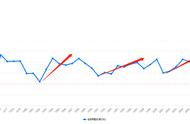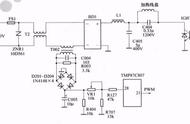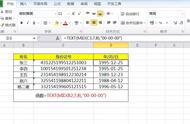
詹姆斯 · 托宾
导读:
本文为诺贝尔经济学奖得主詹姆斯
· 托宾1974年发表在纽约时报上的文章,分析了美国1973年滞胀的原因和政府的对策。当时,主流思想是菲利普斯曲线——通胀与失业呈反向关系,压抑通胀,必须牺牲就业。托宾
区别了三种不同类型的通胀,认为正因为混淆了不同类型的通胀,才导致政策上的失误。菲利普斯曲线就是托宾所声称的“需求拉动型通货膨胀”。
托宾认为,1973年通胀是典型的工资-价格螺旋 原材料价格上涨。综合而言,是成本推动型的,这又源于工会集体谈判、企业市场势力、美元贬值等。托宾主要批评的是通过收缩货币、压抑需求的方式抵抗通胀,提倡的是收入政策—工资物价管制、削减社会保障税等。显然,托宾还是过于乐观了,并且,1973年通胀也不乏货币宽松-需求拉动的因素。一个重要误区是,将滞胀完全归因于大宗商品价格上涨,这容易忽视一些很重要的因素。70年代的滞胀不太可能只因为单一因素而形成,而是一场接力,始于60年代中叶,石油危机只是最后一棒。
笔者正在写一篇回顾性的文章,重温70年代滞胀的成因,以求对未来全球通胀形势提供借鉴,敬请关注。

原题:There Are Three Types of Inflation(副标题为编者所加)
译:许博渊 | 校:魏玉娇 陈达飞
Three decades of experience tell us that inflation is endemic to modern democratic industrial societies. Fortunately the same record indicates that these economies are nonetheless capable of yielding their citizens substantial gains in well being decade after decade. But hysteria about inflation may lead to policies that keep economic progress well below its potential.
三十年的经验告诉我们,通货膨胀是现代民主工业社会的特有现象。幸运的是,相同的记录表明,尽管如此,这些经济体还是有能力在一个又一个十年中为其公民的福祉带来可观的收益。但是,对通货膨胀的“歇斯底里”可能会导致一些政策对经济的促进作用远低于其预期。
The United States Inflation of 1973-74 is a complex and difficult case, unique in our history. In general we may distinguish three types of inflation: (a) excess demand inflation, popularly summarized as “too much money chasing too few goods,” (b) the wage price‐wage spiral, and (c) shortages and price increases in important commodities. Our current inflationis a combination of (b) and (c). But public discussion generally ignores these distinctions and identifies every inflation, including the present case, as the classical type (a). From this diagnosis, mistaken in my opinion, follows the classical remedy, the“old‐time religion” of restricting aggregate demand by tight monetary policy and by fiscal austerity.
1973-1974年的美国通货膨胀是一个艰涩的案例,在我们的历史上是独一无二的。总的来说,我们可以将通货膨胀分为三种类型:(a)需求拉动型通货膨胀,通常被概括为“过多的钱追逐过少的商品”,(b)工资-价格螺旋,以及(c)重要商品的短缺和价格上涨。我们目前的通货膨胀是(b)和(c)的结合。但是公众讨论通常会忽略这些区别,而把每一种通货膨胀,包括目前的情况,都认定为经典的(a)型。在我看来,这一错误的诊断遵循了经典的补救方法,即通过紧缩的货币政策和财政政策来限制总需求的“陈年旧教条”。
With some oversimplification, we can say that the U.S. suffered a severe case of excess‐demand inflation (a) in 1966, when President Johnson and Secretary of Defense Robert McNamara piled war demands onto On economy already operating close to its capacity, and ignored their economists’ pleas to raise taxes. Re-enforced by a lesser dose of excess demand in1968, the 1966 outburst left in its wake a surprisingly stubborn case of inflation type (b), the wage‐price‐wage spiral. Attaining a momentum of its own, this inflation first accelerated and then abated somewhat under the deliberately recessionary policy of 1969-71, assistedby Phases I and II of the controls introduced in August 1971.
简而言之,我们可以说,美国在1966年遭遇了严重的需求拉动型通货膨胀,当时约翰逊总统和国防部长罗伯特·麦克纳马拉将战争需求强加在已经接近能力极限的经济上,并且无视经济学家们的加税请求。在1968年较少的过剩需求的支撑下,1966年通胀的爆发引起了令人震惊且顽固的(b)型通货膨胀,即工资-价格螺旋式通胀。这种通胀获得自己的势头后开始加速,随着1969-1971年刻意实施的紧缩政策的推动和1971年8月开始实施的第一阶段和第二阶段管制的辅助,通货膨胀有所缓和。
At the end of 1972 the ongoing wage-price dynamic was producing over-all inflation 'of 31/2per cent per year, down from 5 percent in 1969--and 1970. However, it was obvious, as events confirmed, that some of the improvement was transient window dressing which would not survive relaxation of controls and completion of the recovery from recession.
到1972年底,持续的工资-价格螺旋每年产生的通货膨胀率为3.5%,低于1969年和1970年的5%。然而,正如各种事件所证实的那样,很明显,其中的一些改善是短暂的“假动作”,难以在放松管制以及经济复苏后幸免。
Some observers view the 1973 expansion of the American, economy as another case of excess demand and blame the Federal Reserve stand the Nixon budget for overheating the economy once again. But unemployment never fell below 4.6 per cent, and the Government cooled off the boom pretty quickly after mid year. In any case, the underlying wage‐price‐wage dynamic was proceeding at year‐end with wage increases of 7 to 8 per cent, which with normal productivity gains would mean price inflation in the neighborhood of 5 percent per year.
观察家们认为,1973年美国经济的扩张是需求过剩的又一例证,并指责美联储阻挠尼克松的预算计划,再次使经济过热。但是失业率从未降到4.6%以下,而且政府在年中之后很快就使经济繁荣降温。无论如何,工资-价格螺旋年终时还在继续,工资增长了7%至8%,如果生产率正常增长,则意味着物价每年上涨约5%。
But mean while the United States was hit by a severe type (c) inflation, spectacular increasein commodity prices. For the first time since the Korean war, external events sharply increased the prices facing American producers and consumers. Everyone knows about the world shortages of food and energy, and about the aggressive new policies of the oil‐producing nations, who have in effect imposed an excise tax of $10 to $15‐billion a year on. American consumers of their products. What may be less well understood is the role of the 16 per cent depreciation of the dollar in foreign exchange since 1970. Working precisely as the architects of the policy hoped, dollar depreciation made imports about $10 billion a year more expensive to Americans. Combined with booms in Europe and Japan, depreciation also increased foreign demand for U.S. products, notably basic agricultural and industrialcommodities. Foreign demands, for, our exports created shortages and price increases for American buyers.
但是与此同时,美国受到严重的(c)型通货膨胀的冲击,商品价格大幅上涨。自朝鲜战争以来,外部事件首次使美国生产者和消费者所面临的价格急剧上涨。每个人都知道世界上粮食和能源短缺,以及石油生产国采取的咄咄逼人的新政策,实际上,这些国家每年从美国消费者对其产品的消费中征收100-150亿美元的消费税。人们不太了解的是,自1970年以来美元在外汇中贬值16%的作用。恰如该政策的设计者所希望的那样,美元贬值使美国人每年进口商品的成本增加了约100亿美元。加上欧洲和日本的繁荣,贬值也增加了外国对美国产品的需求,尤其是基本的农产品和工业品。外国对我们(美国)出口产品的需求,给美国买家造成了商品短缺和价格上涨。
Now there are two important differences between types (b) and (c) inflation. First, the wage‐price‐wage spiral keeps going of its’ own momentum. Wage increases are covered by price boosts, and subsequent wage settlements respond both to past wage patterns and to price inflation. The type (c) commodity price increases, however, are once‐for‐all adjustments tonew supply‐demand situations: those prices won't necessarily fall, but all that is needed to improve the rateof inflation is that they stop rising.
现在,(b)型和(c)型通货膨胀之间有两个重要区别。首先,工资-价格螺旋具有保持其自身势能的趋势。工资上涨被价格上涨所覆盖,随后的工资协议既对过去的工资状况做出反应,也对价格上涨做出反应。但是,(c)类商品价格上涨是针对新的供需情况的一劳永逸调整:这些价格不一定会下跌,但提高通货膨胀率所需要的只是使它们停止上涨。
Second, the wage‐price‐wage spiral does not of itself Impose any collective loss on the natio nor on the urban nonagricultural sector of the economy in which it occurs. One man's price is another's income; when buyers pay more, sellers receive more.The inflation may proceed unevenly, so that some workers, consumers, and property owners lose while others gain; such relative distributional changes are always occurring, inflation or no inflation. But it is simply vulgar nonsense—no less for constant repetition by economists, politicians, bankers,and journalists—to say that aninternal self‐contained inflation causes loss of economic welfare in aggregate. The commodity price increases area different matter. They are symptoms of a real national economic loss, and inparticular a ‘loss to urban wage earners and consumers. In current circumstances, we are paying more for oil and other imports. We're not just paying more dollars but more work and resources; under our new foreign exchange rate policy we can no longer buy foreign goods with paper dollar i.o.u.'s. We are also paying more, about $25 billion a year gross, to our own farmers.Recorded declines of real wages are the painful and unavoidable consequences. To attribute them indiscriminately to “inflation” is superficial and misleading.
其次,工资-价格螺旋本身并不会给国家或城市非农业经济部门带来任何集体损失。一个人支付的价格就是另一个人的收入。当买方付出更多时,卖方获得更多。通货膨胀可能会不均衡地发展,从而使一些工人、消费者和财产所有者受到损失而使另一些人获得收益;这种相对的分配变化总是在发生,不管有没有通货膨胀。但是,经济学家、政治家、银行家和记者不断重复说,内部自给自足的通胀导致了经济福利的总体损失,这简直是庸俗的废话。商品价格上涨是另一回事,它们是真正的国民经济损失的表现,尤其是“给城市工薪阶级和消费者造成的损失”。在当前情况下,我们将为石油和其他进口产品支付更高的价格。我们不仅要付出更多的钱,还要付出更多的工作和资源。根据我们新的汇率政策,我们不能再用纸质美元购买外国商品。我们还向我们自己的农民支付更多费用,每年约250亿美元。有记录的实际工资下降是痛苦且不可避免的结果,但不分青红皂白地将其归因于“通货膨胀”是肤浅且具有误导性的。
The economy is currently in recession, and the prospects are for abnormally slow growth in output and for rising unemployment. The Federal Reserve is administering the classical medicine for excess, demand Inflation (a), because that is the only medicine it has. Some of its spokesmen, supporters and critics regard every inflation, almost by definition, as the excess demand type — on the ground that, whatever the proximate origins of inflation, it could be avoided by sufficiently resolute restriction of demand. The idea is that the wage‐price‐wage spiral will unwind if enough slack—idle capacity and unemployment—is created. Extreme advocates of the old time religion even argue that determined disinflation of demand could have yielded big enough reductions in prices of other goods and services to offset or average out the recent price increases of food, fuel and basic materials.
目前经济正处于衰退期,前景是产出增长异常缓慢和失业率上升。美联储正在采用治疗需求过剩的(a)型通货膨胀的经典药物,因为这是它所拥有唯一的药物。它的一些发言人、支持者和批评家将每种通货膨胀,几乎都按照定义视为过剩需求类型,其理由是,无论通货膨胀的近因如何,都可以通过坚决限制需求的方式避免通货膨胀。这个观点认为,如果经济疲软到一定程度(闲置能力和失业率出现),工资-价格螺旋将消失。陈年旧教条的极端拥护者甚至认为,坚决抑制需求拉动型通货膨胀可以使其他商品和服务的价格有足够大的降幅,以抵消或平均抵消食品、燃料和基础材料的价格上涨。
The trouble with this prescription is that it will not succeed without years of economic stagnation, high unemployment, and lost production, with much more severe consequences for real economic welfare than the inflation itself. Experienceshows that the wage‐price‐wage spiral is extremely resistant to unemployment, recession, and economicslack. The unpleasant fact of life is that the wage and price‐setting institutions of our economy, and of every other non Communist economy, are biased toward inflation. Wages and prices rise when and where demand is strong much more readily than they decline when and where demand is weak. While the classical medicine would have prevented the Vietnam burst of inflation, it will take much more time and pain than its advocates admit to overcome the wage‐price‐wage inflation built into our economy.
这个药方的问题在于,如果没有多年的经济停滞、高失业率和生产破坏,它是不会成功的,这对实际经济福利的影响要比通货膨胀本身更为严重。经验表明,工资-价格螺旋对失业、经济衰退和经济疲软的抵抗力极强。一个令人不悦的事实是,我们经济以及所有其他非共产主义经济的工资和价格制定机制都倾向于导致通货膨胀。在需求旺盛的时期和地区,工资和价格的上涨比在需求疲软的时期和地区的工资和价格下降要容易得多。虽然经典的药方本来可以防止越南通货膨胀的爆发,但要克服我们经济中固有的工资-价格螺旋式的通货膨胀,面临的时间和痛苦要比其倡导者承认的多得多。
The main inflationary threat this year is that the temporary inflation of type (c) will be permanently built into the ongoing wage‐price‐wage spiral. The setbacks to real wages reflected in higher prices offood, fuel, and other commodities cannot really be reversed. General attempts to “catch up” by escalated wage settlements will simply be defeated by accelerated price inflation. So Washington is right to bealarmed by this year's wage settlements.
今年的主要通货膨胀威胁是(c)型暂时性通货膨胀,它将永久地纳入正在进行的工资-价格螺旋之中。粮食、燃料和其他商品价格上涨所反映的实际工资的倒退无法被扭转。一般的试图通过逐步升级工资协议来“追赶”的努力,只会被加速的物价上涨所击败。因此,华盛顿对今年的工资协议感到震惊是合理的。
But there isvery little the Federal Reserve can do about them, even the Fed provokes a full‐blown recession. The settlements are already in the works, and they depend much more on the recent history of wages and prices than on the current strength or weakness of demand.1 The budget makers of the Executive and the Congress are in much the same position. They too can be nobly and resolutely austere, pretending they are fighting a classical type (a) inflation. But the results pf budget cutting will be measured more in lower unemployment and ‘Roland Topor production statistics than in wages and prices. Present’ anti‐inflation hysteria may well yield policies that bring us the worst of several worlds.
但是美联储对此几乎无能为力,甚至说正是美联储挑起了全面的经济衰退。工资协议已经在酝酿之中,它们更多地取决于近期的工资和物价历史,而不是目前需求的强弱。行政部门和国会的预算制定者处于类似的处境。他们也可以高尚而坚决地紧缩开支,假装他们正在与典型的(a)型通货膨胀作斗争。但是削减预算的结果将更多以较低的失业率和“罗兰·托普尔”生产统计数据来衡量,而不是用工资和价格来衡量。当前歇斯底里的抗通胀行为可能会带来使我们陷入世界最糟糕状况的政策。
Is there a more promising and less costly way to confront the unique inflationary problem of 1974? If ever there was a time for what the Europeans call “incomes policy,”the time is now. It may be that the Nixon experiment with wage and price controls was never a good idea, and the stop‐and‐go alternation of phases certainly didn't help. But the total abandonment,in April of this year, of every legal or informal restraint was incredibly untimely.
有没有一种更有希望、成本更低的方法来应对1974年独特的通货膨胀?如果说欧洲人所谓的“收入政策”还有时机的话,那么现在正是时候。尼克松进行工资和价格控制的实验可能从来都不是一个好主意,而且阶段性的停顿和运转肯定无济于事。但是,在今年4月,完全放弃所有法律或非正式限制的措施是非常不合时宜的。
What was needed was Presidential leadership—in open, can did understanding with business, labor,agriculture, and consumers—to establish realistic moderate guide posts for wages and prices. We still need what some of us have called a new social contract for the economy, along the following lines: (1) Monetary and fiscal policy would begeared, not to increase' unemployment, but to keep it from rising, and toachieve, not to thwart, the 4 per cent a year growth in production of which oureconomy is capable, (2) Workers’take‐home pay would be increased by cutting Social Security payroll taxes and by making the structure of those taxes more equitable and progressive. This taxcut would provide part of the demand stimulus needed under (1). (3) Labor, forits part, would consent to a general wage guide post of 8 or 9 per cent, and Washington would expect and exact comparable moderation in business and agricultural price‐setting.
我们需要的是总统的领导力——对企业、劳工、农民和消费者开诚布公,对工资和价格进行切合实际的适度指导。我们仍然需要一些人所倡议的新的经济社会契约,其内容大致如下:(1)制定货币和财政政策,不是为了增加失业而是要防止失业率上升,并且实现而不是阻碍经济有能力达到的每年4%的增长目标;(2)削减社会保障税,并使这些税收的结构更加公平,以增加工人的实际工资,减税措施将提供(1)中所需的部分需求刺激;(3)劳工方面将同意接受8%或9%的一般工资指导,政府将期望并要求在商业和农业价格制定方面采取类似的温和措施。
The hour is late. But the long national nightmare is over. Our new President has the trust and goodwill of the American people. If the economic problem he confronts is unique, he also enjoys a unique opportunity to seek a new direction.
时辰虽晚,但是漫长的全国性噩梦已经结束,我们的新总统得到了全国人民的信任和善意。如果说他所面对的经济问题是独特的,那么他也将享有寻求新方向的独特机会。
一瓣公益

这是一瓣在2018年4月23日“世界读书日”发起的一个公益活动。每篇文章获得的赞赏,全部捐献给“深圳市石门坎教育公益基金会”,为石门坎的孩子建一个“图书馆”。感谢各位读者的支持,目前已为小朋友们筹集约两万元“图书基金”。
一瓣公益 | 向深圳市石门坎教育公益基金会的捐赠
一瓣公益 | 向上海太阳花组织捐献图书
一瓣公益 | 第三批图书捐赠:云南禄丰苗族学校
,














